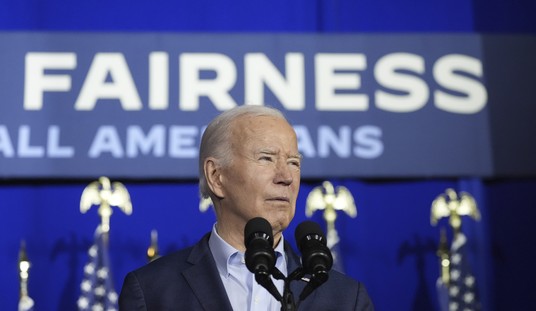“Who runs the world? The liberal elite,” writes Matthew Continetti at National Review Online, in a piece titled, likely with a wink to Emmanuel Goldstein, “Oligarchy in the 21st Century:”
The world of unequal incomes that liberals self-righteously lament, the world of concentrated, inherited wealth, of politics dominated by the concerns of a few, is a world constructed by liberal methods according to liberal ideals. “The ruling ideas of each age have ever been the ideas of its ruling class,” Marx and Engels wrote in 1848. And there can be no denying that the ruling ideas of our age — diversity, multiculturalism, cosmopolitanism, gun control, free trade, unrestricted migration, sexual autonomy, feminism, environmentalism — are liberal ones.
The popular rhetoric of income inequality, the attacks on Charles and David Koch, the assertion that the system is rigged against the common man, the accusations that a vast right-wing conspiracy has despoiled the American landscape and society and polity — these are the means by which the ruling class masks its true position and justifies its continued agglomeration of power and of wealth.
The campaign against inequality and the call for higher taxes and the regulatory burdens placed on extractive industries further the self-interest of the liberals who rule our world partly because those liberals are already established in society and have already made their money, partly because like David Cohen or Tom Steyer or George Soros or Elon Musk or Warren Buffett they stand to benefit financially from their preferred outcomes, but also because there are fortunes to be made, there is status to be gained, in justifying the continued expansion of the welfare state, in designing plans for the redistribution of tax dollars, in demonizing those sections of the elite, and that minority of Americans, which dissent from the ruling ideas.
Seven of the ten richest counties in the country voted for Barack Obama in 2012, many of them by huge margins. Six of the ten are in the Washington, D.C., metro area, which has benefited from government employment and payment regulations, from government contracting, and from consulting, lobbying, and lawyering for clients petitioning the government. The median income of Falls Church City, Va., is $121,250 dollars. In 2012, Falls Church City voted for Obama 70 percent to 30 percent.
Democrats represent eight of the ten richest congressional districts in the country. Democrat Carolyn Maloney represents the district with the highest per capita income of $75,479. Outgoing congressman Henry Waxman represents the district with the second-highest per capita income of $61,273. The only two Republicans on the list are Representative Leonard Lance, whose New Jersey district ranks seventh, and outgoing Representative Frank Wolf, whose Virginia district ranks tenth. The average per capita income of Democratic House districts is $1,000 more than Republican ones.
Congressional Democrats have a higher median net worth than congressional Republicans. House Democrats have a higher median net worth ($929,000) than House Republicans ($884,000), while the median net worth of Senate Republicans ($2.9 million) is higher than that of Senate Democrats ($1.7 million). But it is not like the Senate Democrats are hurting financially. They have lost some wealthy members in recent years (Herbert Kohl, John Kerry, Frank Lautenberg). Of the ten richest members of Congress, only three are Republicans.
Read the whole thing.
Back in 2004, we spotted Thomas “What’s the Matter with Kansas?” Frank bemoaning the Democrats’ close association with Hollywood, and fearing that it was hurting the Democrats’ hardscrabble image — which itself was a myth of Hollywood proportions. But with John Kerry running that year, the ultimate Boston Brahmin who, like Teddy Kennedy, embraced radical chic as a way to help tone down his plutocratic image, it was a brightly-lit mile marker on the road to today’s political environment. As I wrote back then:
In many TV sit-coms and comedy movies from the 1960s through the early 1980s, you’ll see the cliché of the wealthy country club Republican, ala Nelson Rockefeller. Jim Backus’ blue double-breasted blazer-wearing Thurston Howell III character was an example of this; David Ogden Stiers’ Major Charles Emerson Winchester on M*A*S*H (ironically, Winchester was a Boston Brahmin, like Senator Kerry) was another.
George H.W. Bush’s image was very much in that mold. But he interrupted a flip-over that began with President Reagan’s self-made aw-shucks folksy style and continued with George W. Bush’s cowboy boots-wearing, BBQ-loving manner and the Texas twang of his voice.
It highlights an interesting trend in politics over the last 25 years:
The shift of the Republican party as now being associated with “the little guy”, the average man–who might be a blue collar guy, or he might be a self-employed high tech entrepreneur. But either case, he’s working hard to get by and better himself. In contrast, the Democrats are now very much the party of the elite: ambulance chasing trial lawyers (including John Edwards himself), often big business, foreign interests, the media, academia, and most dramatically, Hollywood.
Will the media and Hollywood ever accurately reflect this sea change in the culture, or will they continue to view the wealthy as Thomas Nast and Peter Arno cartoons and the man on the Monopoly boxtop, satiric icons of a world that ceased to exist decades ago?
Let’s look to England’s postwar media for an answer. As Peter Hitchens, the conservative brother of the late Christopher Hitchens wrote in his 1999 book, The Abolition of Britain: From Winston Churchill to Princess Diana:
[1960s-era comedies] Beyond the Fringe, Forty Years On and TW3 [That Was The Week That Was] created a tradition of ‘anti-establishment’ comedy which continued long after its roots were forgotten. There may still have been an ‘establishment’ of snobbery, church, monarchy, clubland and old-school-tie links in 1961. There was no such thing ten years later, but it suited the comics and all reformers to pretend that there was and to continue to attack this mythical thing. After all, if there was no snobbery, no crusty old aristocrats and cobwebbed judges, what was the moral justification for all this change, change which benefited the reformers personally by making them rich, famous, and influential?
And of course, episodes of Monty Python’s Flying Circus, shown endlessly in reruns since its 1969 debut and readily found on YouTube thanks to uploads of their legions of (well-deserved) fans, would permanently codify these stock forms, even as their real-life equivalents were exhausting themselves in British society, as Hitchens writes.
Which means that in 21st century America, even as wealthy of the real world continue to trend ever leftward, expect century-old cliches to dominate how they’re portrayed in Hollywood and the media. But then, since “Progressivism” itself is trapped running in place inside a perpetual hamster cage wheel, why shouldn’t their outposts in TV and film studios be as well?
Related: No sooner do I hit publish on this post, than I come across this headline at Twitchy: “‘Check your donor lists’: Paul Begala advises conservatives not to defend Donald Sterling; Instapundit leads schooling.”









Join the conversation as a VIP Member